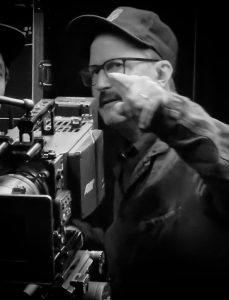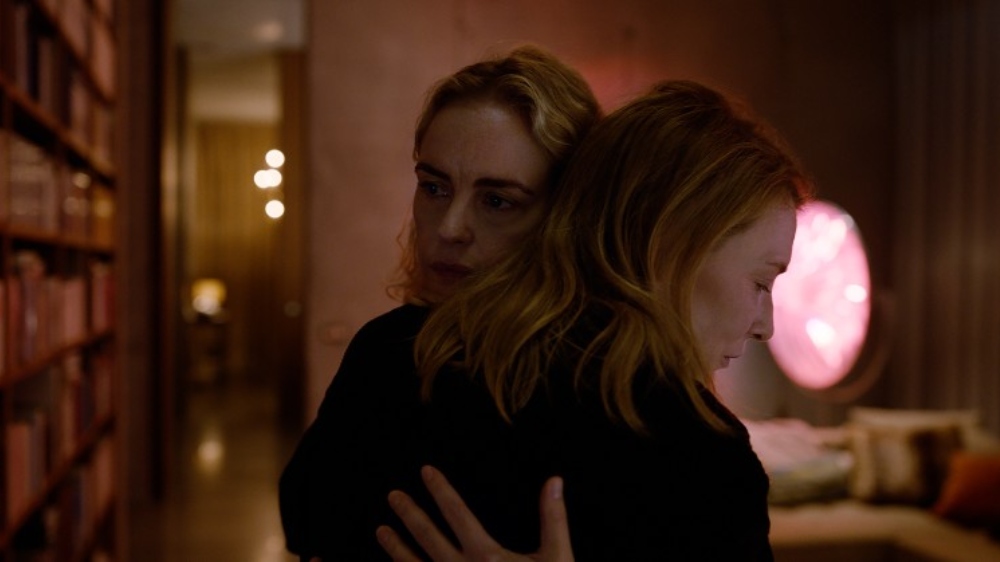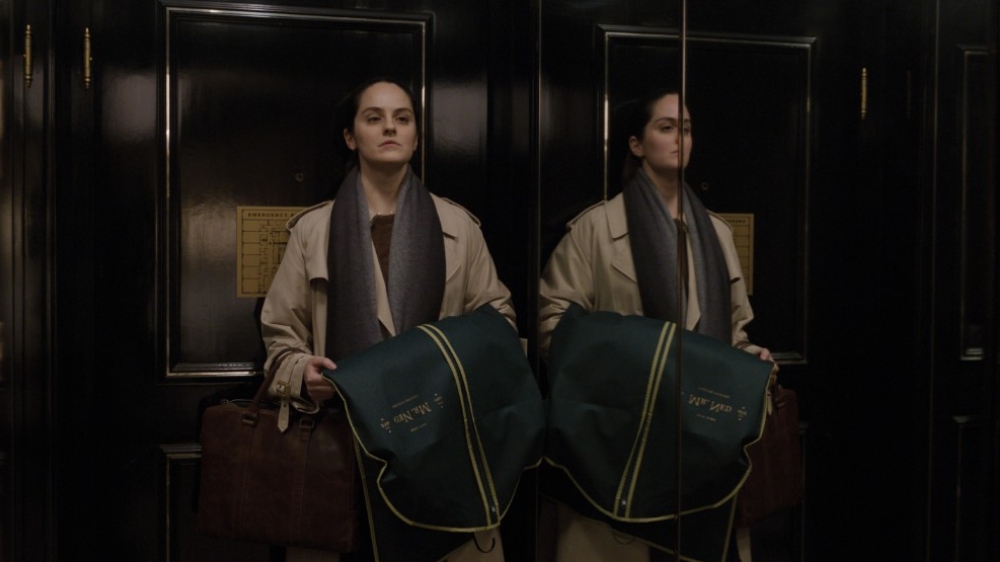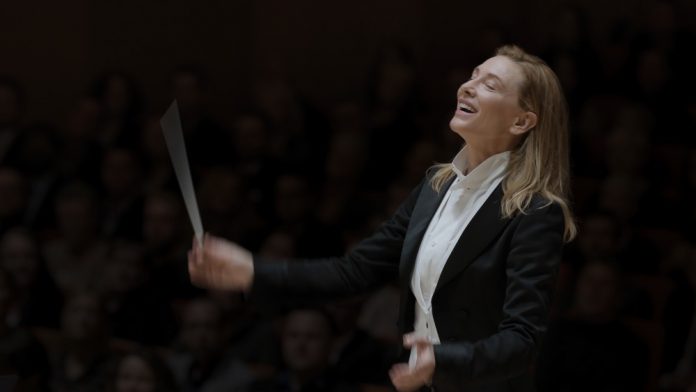It has been almost exactly 16 years since filmmaker Todd Field’s Little Children was released to critical acclaim and a trio of Oscar nominations, though he hasn’t exactly been resting on his laurels, nor has he been locked away in Hollywood’s fabled “director’s jail.” No, Field has spent the last decade-and-a-half working hard to get a number of challenging projects off the ground.
Maybe some of those will come to fruition someday, but film and classical music lovers should probably be thankful and thrilled that just before the pandemic, Field was able to get an original drama greenlit by Focus Features.
TÁR takes its title from the surname of Lydia Tár, a world-renowned (but entirely fictional) conductor and the first female music director to lead a major German philharmonic. Two-time Oscar winner Cate Blanchett plays Lydia, who is put under incredible scrutiny after a woman she mentored (and then systematically got blacklisted) commits suicide. TÁR examines Lydia’s day-to-day life and her interactions with those she considers allies in trying to help her achieve her lofty goals, as well as those who harbor ulterior motives to take her down.
Above the Line spoke to Field over the phone last week, and though the conversation began with a few technical issues, they were quickly ironed out so that he could tell us about the logistics of making such a deep, layered film with many new collaborators while overseas in the middle of a pandemic, and why he decided to take a risk and write the film with Blanchett in mind.

Above the Line: At what point were you on this movie when COVID hit? Had you finished writing it?
Todd Field: I’d been thinking about a character like this for an awfully long time, and then COVID happened — it was March 2020 — and Peter Kujawski and Kiska Higgs at Focus told me that I could write whatever I wanted.
ATL: I’m surprised the studio was so willing to greenlight and put a movie into production before the situation with COVID was resolved.
Field: They were solving it pretty early. Production came to a screeching halt in March, which is actually when I started writing the script, but by July, when I handed it in, people were figuring it out. There was no way they were not going to work, so a lot of film and television had very, very strict protocols that they were putting into place. It created a huge challenge for the industry, obviously, because budgetarily, that had to be a line item. It was no small amount of shekels to protect your crew and your cast and all your support [staff]. Also, it changed the way that people worked — you had shorter working hours, etc. I was surprised that they greenlit it, and I wasn’t sure how I would go about shooting it, knowing — just from friends [who] were shooting — the kind of protocols that were required to do so.
ATL: Either while you were in production or in post, a couple of documentaries were released, one about Gustavo Dudamel (¡Viva Maestro!), who was name-checked in the film, and another about Leonard Bernstein’s protegé, Marin Alsop (The Conductor). Did either of them influence you to do something in that world?
Field: Actually, both of those conductors are name-dropped in the movie. Marin is name-dropped in the very first scene along with Nathalie Stutzmann and some others. But of course, you’re talking about giants — Dudamel and Alsop are giants. There are very, very few people in that position. Marin, specifically for the North American classical music scene — she’s in Vienna now — was a complete trailblazer. She was the first to be the chief conductor of what is considered one of the big American orchestras until she stepped down. That’s part of that tapestry, as is Leonard Bernstein, as is Dudamel, as is everyone that came before them, for sure. Absolutely.
ATL: Are you a big enthusiast of symphonic or classical music in general? Is that something that interests you or is part of your overall DNA?
Field: I have a great love for what they call concert music, but my background was really in jazz. As Hildur will tell you, as a music maker, as you get older, you realize it’s all noise. Categorizing it is a practical thing, but I think musicians, as they get older, their tastes get much more expansive and much more idiosyncratic. I was a real young jazz snob [who] didn’t want to listen to anything when I was a young person, but now, I love classical music.
ATL: I imagine a project like this, you need to have an actor in mind or involved very early on in the process. Was that true with Cate Blanchett? Did you have her in mind or did you tell her about this while you were writing or even before writing it?
Field: I didn’t tell her about it, and I didn’t tell the studio about it. I think they thought I was writing a movie for a male, so they had no idea. The only person who knew I was writing something for Cate was my wife, but I knew I was writing it for her.

ATL: You’ve written many screenplays, and any filmmaker would tell you not to write for a specific actor because if they can’t do it for some reason or another, you’re in trouble. So how did you approach Cate with TÁR? Did you already have a completed screenplay you could send her or did you tell her about the project even before there was a script to read?
Field: Cate and I met 10 years ago to discuss possibly collaborating on a project that was based upon a script that Joan Didion and I had written together. I had dinner with [Cate] in New York, and I was really struck by her wit and intelligence and her holistic ability to have an overview on a narrative outside of what she would do as a performer. I knew coming out of that dinner, and even ultimately, when the project Joan and I had never happened, that I felt somewhat faded, in that I would work with Cate down the road.
When I sat down to write the script, she kind of appeared on my desk, and she never left. That’s the first time I’ve ever written for an actor before, for exactly the reasons that you say, not to mention the fact that it can be very limiting. If you’re thinking about an actor, you’re probably thinking about a piece of work they’ve already done, as opposed to the character themselves. She has so much verisimilitude, she never repeats herself, so there’s no chance of that with someone like that. She’s one of the greatest filmmakers who’s ever lived.
ATL: Authenticity is really key to this, especially since you’re creating a fictional character within the very real world of symphonic music. How did you and Cate get up to speed to pull off the authenticity on display here?
Field: You were asking, “Did I really love classical music?” and the answer is “yes,” but I needed a formal crash course education. I had read John Mauceri’s book, For the Love of Music, and I called John. It was at the beginning of the pandemic, so he was stuck in his apartment in New York, and I was stuck up in Maine. He agreed to give me some of his time, and he was a very, very, enthusiastic, evangelistic instructor in the way that his mentor was — Lenny Bernstein, because John was an assistant to Lenny.
Actually, that was one of the things. He was the only person who was allowed to conduct Lenny’s compositions while Lenny was still alive. He had a very rich background and would point me in different directions and say, ‘You should listen to this person or that person,’ or ‘You might want to look into this or that or the other thing.’ Cate had a fair amount of knowledge and a background in all kinds of music, including concert music. We both started on a very autodidact, semi-autodidact journey together in terms of really, completely immersing ourselves and firing off each other with what we discovered as civilians outside of that milieu.
ATL: One thing I never knew and learned from watching the movie is the importance of the assistant conductor and the politics involved with choosing one. Is that something you learned from John, as well?
Field: That’s kind of a conceit, to be honest, and I don’t think that you find that in Europe at all. That was something I wanted to have, and I asked John about it, and John said, ‘There’s certainly a tradition for it with Americans,’ and obviously, he had his own experience with Leonard Bernstein, as did other assistants as well, but it’s sort of an elective position.
The truth is, as she says to this clarinet player, “that decision is entirely mine.” And it really would be entirely the conductor’s, and probably the conductor would actually pay for their assistant out of their own pocket, and then the assistant conductor would be paid for by the orchestra. The ascension of an assistant conductor would be under the purview of the conductor, if they had one. That’s not generally in the European tradition like it was, at least back in what you’d find more in the UK or America, as far as I understand it. It was a useful device, if you will, because we’re examining power, and it was very important to figure out, ‘what’s the pecking order here?’

ATL: Let’s talk about your heads of department. I know that you used a lot of the same people on your first two movies, but obviously, with the amount of time that has passed since Little Children, it must have been harder to get some of them, and you were also filming in Germany, so I assume you had to use many locals. Can you talk about the crew and how you figured out its assembly?
Field: There were certain rules with the studio — one was that I would have to hire nearly everyone, including most, if not all of the actors, out of Germany. As a practical matter, there were exceptions to those rules, especially with the actors, but for the crew, everybody was local. Even Hildur was local. She’s Berlin-based, too, and [Editor] Monika Willi is semi-local because she was in Vienna. She would come in for different stretches, like when we were at the Dresden Philharmonic, even, shooting that material. We had many camera setups, and there was a great deal of logistics in terms of what she and I had to do with Florian [Hoffmeister, the DP]. For the most part, she was back in Vienna until she and I started post-production, officially, [at] the end of this last January, when we were in a bubble up in Scotland, in the middle of a 15th-century nunnery with no vehicles and at the will of the caretaker. We edited every day, seven days a week — she never took a day off.
In terms of the crew, I wasn’t shooting with Antonio Calvache, who was my cinematographer on my first two films and who I went to AFI with. I wasn’t cutting with Frank Reynolds or Leo Trombetta, or, for that matter, Adam Pertofsky, somebody I work with often and exclusively in advertising. But Monika was someone [who] I had contacted and reached out to, along with [Cinematographer] Jörg Widmer about 13 or 14 years ago on a film I was going to do in India that Jörg was going to shoot. It was just another film that fell apart. When I called her up, I didn’t even know if I still had the right number for her. I sent her the script, and I told her what the conditions were, and she agreed to do it [based on] the fact that we were supposed to do all of our posts in Vienna. That’s where she’s based with her husband and their children, but when we finished the shoot in December of 2021, there was another lockdown in both the UK and in Austria, so we had to find some neutral ground, and that’s how we wound up in Scotland.
She suffered, as did I, but I knew I would be away from my family, [and] she didn’t. She was away working seven-day weeks for eight months on this. It’s just completely, utterly, tirelessly involved in every possible detail, from sound design all the way through grading and the final mix. It’s a tremendous opportunity for me to be able to collaborate with somebody with her skill set. Obviously, she’s won every possible award in Europe, and she’s worked with fine filmmakers who we all revere and admire, but nothing prepared me for working with somebody with her skill. I think a lot of times, editors are rewarded for over-editing, just like directors can be celebrated for over-directing, and actors for overacting, etc.
But what she does is much more difficult. She has a pulse in her, it’s kind of an exquisite sense of rhythm, that is, not to get too metaphorical about it, but it’s very musical. That was a very rich experience, and I feel very, very lucky.
In terms of the other HODs — my production designer was Marco Bittner Rosser. Marco is somebody that I called up, not to design the movie, but I called him up when I was trying to budget. His background is in architecture, and he was so nimble and so deft at being able to problem-solve on the phone before I’d ever met him, and the tempo with which he works and the engagement with which he works was so exciting that when we got through the first budget, I said, ‘Would you like to design the film?’ And he said, ‘Yes.’ And that, too, was a very, very rich and rewarding experience. This was a difficult, difficult film because we were only able to build so much and I was very specific in terms of what I wanted to be able to do with his character, in terms of how the camera was to move.
Berlin’s changed a lot from at least how I imagined it. We tried to find a large residence, for instance, and move through it. You’re gonna find a lot of old villas with tiny bedrooms, and you simply can’t do it. There were a lot of big challenges, above and beyond the concert hall and above and beyond all the building that Marco did of the backstage areas for that concert hall and the exquisite work he did in recreating her childhood home and other sets.

Florian Hofmeister was somebody I called early on. I really admired his lighting for this Ridley Scott-produced show that Edward Berger had directed called The Terror for AMC. It was all done on a stage and gimbals for the ship in Budapest, and yet, the quality of light, Florian — much like Antonio Calvache — both have exquisite eyes for, ‘how does light fall on a face? How does light reflect off of surfaces?’ I was just so impressed with his lighting that I rang him up, and we started talking.
That was a very rich experience, as well, because he was open to having a fairly technical conversation, which I think a lot of cinematographers don’t want to have because they get very territorial, but he’s not that sort. We started developing new lenses together, and we came up with a new print emulsion system that now Arriflex has adapted for all of their new camera systems. We did extensive tests for months on the film before we ever shot anything. He’s just a really, really, very special cinematographer.
I should probably say a quick word about Bina Daigeler. You may know her work from Pedro Almodovar‘s [films]. She was nominated for Mulan. She is an incredible collaborator. This is all contemporary clothing on this, and I think all the bells and whistles, a lot of times people get credit, again, like over-editing, they get credit for big costume dramas because you see the contrast with your daily life. But to design a show where you don’t get caught designing contemporary costumes, it’s like the hardest thing to do. I know this from advertising — it’s really, really difficult. She is somebody that comes to her costumes, not from the outside in, but from the inside out, always through character. Also, [she’s] someone that has, very much like Cate, the big picture in mind, so somebody that is very gently nudging you when it comes to locations and sets and things like that. It was a very special set of department heads that I was lucky enough to collaborate on this with.
ATL: One of the things that struck me about this movie was the passage of time. It’s never quite clear how long it takes for this story to unfold once we meet Lydia, whether it’s a week, a month, or two months, etc.
Field: Really, the story, for the most part, takes place over three weeks, except for the dénouement. It’s sort of the first three weeks of November-ish, but the passage… it’s interesting that you say that. I’m glad that’s the feeling you’re left with, but there are a lot of day and night breaks in this, probably [out of] necessity, just in terms of what bothers her. So you have very clean breaks, but you don’t know if it’s the following day or if it’s three days later, which is what I think you’re getting at.
ATL: Right before I watched TÁR, I spoke with Ruben Östlund for his film Triangle of Sadness and he told me he was interested in exploring women in power and whether they would abuse that power, and then I saw your movie and saw similar ideas being explored, including that of cancel culture.
Field: For me, this movie is about examining power structures and how power is transmuted and transmitted between different parties who feed those in power, and who’s fed by the people in power, and what those transactions are like. In terms of these other movements that are happening right now, clearly, they’re long overdue, and there’s a lot of rage behind them, which is, what it’s going to take for there to be even any incremental change. The danger is sort of dismissing them or being pejorative about them, because people feel excluded from the conversation. That’s sort of what interests me, which is, ‘how do we start talking to each other instead of talking AT each other? How are we all valid enough to be included in that conversation?’ I’m some middle-aged guy — is there a seat at the table for me to talk to anyone? Is there a seat for a 24-year-old person at my table? I would hope that the answer [would be] ‘yes.’
TÁR is now playing in select cities leading up to its nationwide release on Oct. 28. Look for our interview with Composer Hildur Guðnadóttir over on Below the Line soon.



